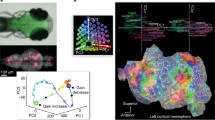Abstract
What can artificial intelligence learn from the cognitive sciences? We review some fundamental aspects of how human cognition works and relate it to different brain structures and their function. A central theme is that cognition is very different from how it is envisioned in classical artificial intelligence which offers a novel path toward intelligent systems that in many ways is both simpler and more attainable. We also argue that artificial intelligent systems takes more than a single silver bullet. It requires a large number of interacting subsystem that are coupled to both the body and to the environment. We argue for an approach to artificial general intelligence based on a faithful reproduction of known brain processes in a system-level model that incorporates a large number of components modelled after the human brain.
This work was partially supported by the Wallenberg AI, Autonomous Systems and Software Program - Humanities and Society (WASP-HS) funded by the Marianne and Marcus Wallenberg Foundation and the Marcus and Amalia Wallenberg Foundation.
Access this chapter
Tax calculation will be finalised at checkout
Purchases are for personal use only
Similar content being viewed by others
References
Andersen, R.A., Essick, G.K., Siegel, R.M.: Encoding of spatial location by posterior parietal neurons. Science 230(4724), 456–458 (1985)
Baddeley, A.: Working memory. Curr. Biol. 20(4), R136–R140 (2010)
Balkenius, C.: Natural intelligence in artificial creatures. Lund University Cognitive Studies (1995)
Balkenius, C., Johansson, B., Tjøstheim, T.A.: Ikaros: a framework for controlling robots with system-level brain models. Int. J. Adv. Robot. Syst. 17, 1–12 (2020)
Brooks, R.: A robust layered control system for a mobile robot. IEEE J. Robot. Autom. 2(1), 14–23 (1986)
Cisek, P.: Cortical mechanisms of action selection: the affordance competition hypothesis. Philos. Trans. Roy. Soc. B Biol. Sci. 362(1485), 1585–1599 (2007)
Clark, A.: Mindware: An Introduction to the Philosophy of Cognitive Science. Oxford University Press, Oxford (2000)
Epstein, R.A., Patai, E.Z., Julian, J.B., Spiers, H.J.: The cognitive map in humans: spatial navigation and beyond. Nat. Neurosci. 20, 1504–1513 (2017)
Fagg, A.H., Arbib, M.A.: Modeling parietal-premotor interactions in primate control of grasping. Neural Netw. 11(7–8), 1277–1303 (1998)
Fuster, J.: The Prefrontal Cortex. Academic Press (2015)
Gardenfors, P.: Conceptual Spaces: The Geometry of Thought. MIT Press, Cambridge (2004)
Gibson, J.J.: The theory of affordances, Hilldale, USA, vol. 1, no. 2, pp. 67–82 (1977)
Graybiel, A.M.: The basal ganglia: learning new tricks and loving it. Curr. Opin. Neurobiol. 15(6), 638–644 (2005)
Johansson, B., Tjøstheim, T.A., Balkenius, C.: Epi: an open humanoid platform for developmental robotics. Int. J. Adv. Rob. Syst. 17(2), 1729881420911498 (2020)
Johansson, R., Holsanova, J., Holmqvist, K.: Pictures and spoken descriptions elicit similar eye movements during mental imagery, both in light and in complete darkness. Cogn. Sci. 30(6), 1053–1079 (2006)
Kandel, E.R., Schwartz, J.H., Jessell, T.M., Siegelbaum, S., Hudspeth, A.J., Mack, S., et al.: Principles of Neural Science, vol. 4. McGraw-Hill, New York (2000)
Munakata, Y., Herd, S.A., Chatham, C.H., Depue, B.E., Banich, M.T., O’Reilly, R.C.: A unified framework for inhibitory control. Trends Cogn. Sci. 15(10), 453–459 (2011)
Ohyama, T., Nores, W.L., Murphy, M., Mauk, M.D.: What the cerebellum computes. Trends Neurosci. 26(4), 222–227 (2003)
O’Keefe, J., Nadel, L.: The Hippocampus as a Cognitive Map. Oxford University Press, Oxford (1978)
Redgrave, P., Prescott, T.J., Gurney, K.: The basal ganglia: a vertebrate solution to the selection problem? Neuroscience 89(4), 1009–1023 (1999)
Schmahmann, J.D.: The cerebellum and cognition. Neurosci. Lett. 688, 62–75 (2019)
Smith, R., Thayer, J.F., Khalsa, S.S., Lane, R.D.: The hierarchical basis of neurovisceral integration. Neurosci. Biobehav. Rev. 75, 274–296 (2017)
Sutton, R.S., Barto, A.G.: Reinforcement Learning: An Introduction. MIT Press, Cambridge (2018)
Wiener, N.: Cybernetics or Control and Communication in the Animal and the Machine. MIT Press, Cambridge (2019)
Wolpert, D.M., Miall, R.C., Kawato, M.: Internal models in the cerebellum. Trends Cogn. Sci. 2(9), 338–347 (1998)
Author information
Authors and Affiliations
Corresponding author
Editor information
Editors and Affiliations
Rights and permissions
Copyright information
© 2023 The Author(s), under exclusive license to Springer Nature Switzerland AG
About this paper
Cite this paper
Balkenius, C., Johansson, B., Tjøstheim, T.A. (2023). Elements of Cognition for General Intelligence. In: Hammer, P., Alirezaie, M., Strannegård, C. (eds) Artificial General Intelligence. AGI 2023. Lecture Notes in Computer Science(), vol 13921. Springer, Cham. https://doi.org/10.1007/978-3-031-33469-6_2
Download citation
DOI: https://doi.org/10.1007/978-3-031-33469-6_2
Published:
Publisher Name: Springer, Cham
Print ISBN: 978-3-031-33468-9
Online ISBN: 978-3-031-33469-6
eBook Packages: Computer ScienceComputer Science (R0)




